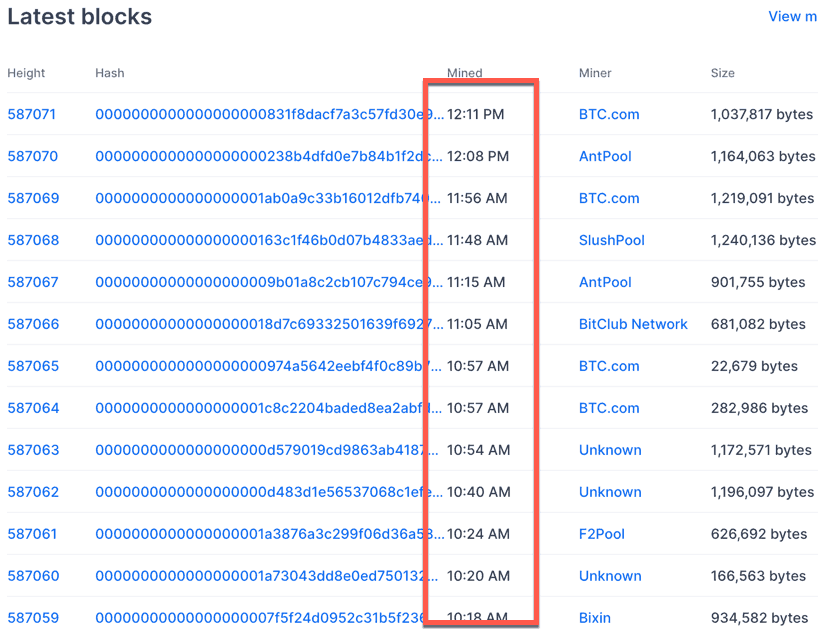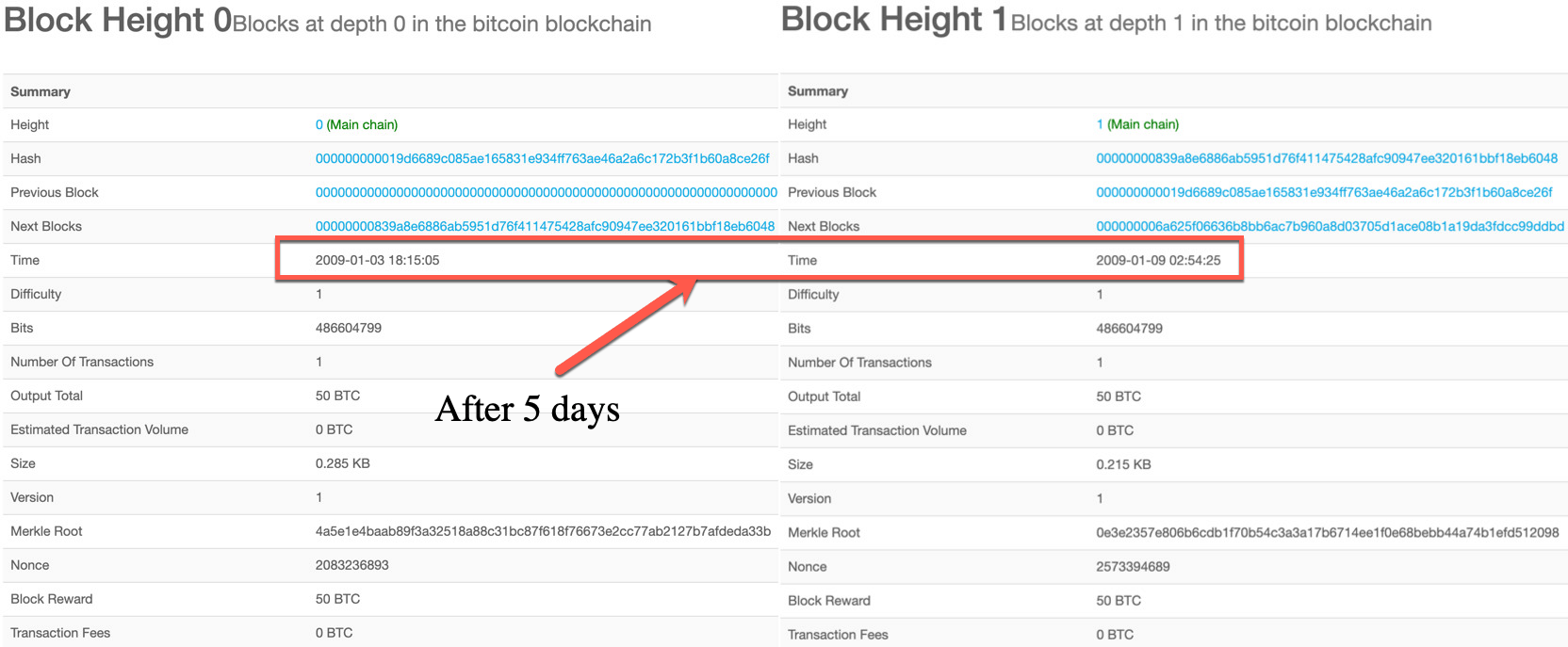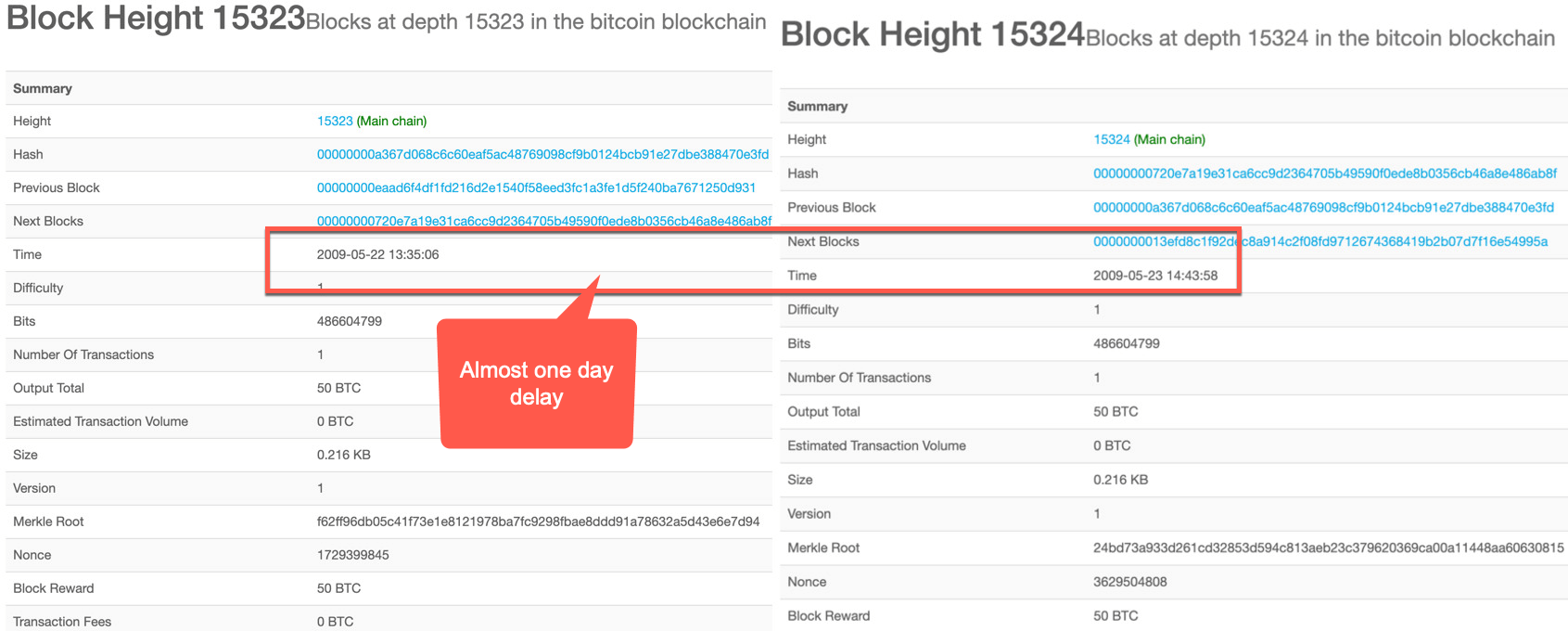What Is ‘Block Time’ In Bitcoin & Cryptocurrency

When you start with Bitcoin, you realize there is a lot to learn.
Probably you have understood this and are maybe exploring the meaning of ‘Block Time’ in cryptocurrency. I must say you are in the right place because, at TheMoneyMongers, we endeavor to make it easy for you to understand cryptosphere. So for starters, I would you to also read the following guides:
Once you are done with them, you will be able to appreciate the meaning of Block-Time even more precisely. But for now, I am assuming you have read the above links and directly dwell on the subject
Block-Time Definition [Cryptocurrency, Bitcoin, Ethereum, etc.]
Block-time is the time taken by the blockchain in producing subsequent blocks.
As you know, Blockchain is simply a ledger which is made of different blocks tied to each other in chronological order. But these blocks are produced at different time intervals in a proof of work blockchain like Bitcoin or Litecoin etc.
The time interval between one block and another block is known as block time in crypto.
Note: You must not confuse Bitcoin block time with Bitcoin confirmation time because both are different. One is a function of mining difficulty, and another is a function of the load on the blockchain plus your transaction fees.
Why Is Bitcoin Blockchain Block Time 10 Minutes?
Let’s consider Bitcoin’s blockchain to understand it more clearly.
Bitcoin’s block time is 10 minutes, as you know.
It means Bitcoin network mines a new block every 10 minutes, and this block contains Bitcoin transactions. These blocks are mined by Bitcoin miners who are putting in their energy and time in solving a complicated mathematical puzzle.
The average time in which a Bitcoin block is produced is defined in the protocol itself by Satoshi Nakamoto, which is a function of Bitcoin’s mining difficulty level.
This Bitcoin difficulty makes sure that the average time between blocks 10 minutes and this difficulty level changes after every 2016 blocks of Bitcoin or roughly two weeks.
Whenever the average times goes below 10 minutes, difficulty level kicks in and it increases to bring back average block mining time back to 10 minutes. And vice-versa in case, the average block-time goes above 10 minutes.
Satoshi defines this average block time of 10 minutes in the whitepaper. According to him, it seemed a sufficiently safe time lag between two blocks to maintain the security of the whole network.
But there many other blockchains with different block timings, for example:
- Block-time in Ethereum is 20 seconds
- Block-time in Litecoin is 2.5 minutes
- Block-time in Bitcoin Cash is 10 minutes
So that’s how different blockchain’s block generation time is different. But it is usually a function of how much difficulty is there on the blockchain to mine the next block.
Bitcoin Last Block Time
Bitcoin’s last block time can be easily seen on popular Bitcoin block explorers. For example, look at the below image. I have fetched it from Blockchain.info showing the time at which blocks were mined.
If you pay close attention to this metric, you will realize that some blocks are coming early and some late. Meaning some are coming before 1o minutes and some after 10 minutes, but on an average, the network tries to maintain an average of 10 minutes.
But due to less difficulty and more mining power, this average can go out of wack. So suppose the average came down to 9 minutes instead of 10 minutes. Then the network difficult will readjust after 2016 blocks making it more difficult for the miners with the same hashing power to mine blocks in 9 minutes average time thus bringing it back to its normal 10 minutes.
Longest Bitcoin Block Time
The longest difference between successive blocks is 463160 seconds (5 days, 8 hours, 39 minutes, 20 seconds) between blocks 0 and 1.
The second-longest is 90532 seconds (1 day 1 hour 8 minutes 52 seconds) between blocks 15323 and 15324.
Conclusion
Now, I think you understand what does block time mean in cryptocurrency?
Some people also ask for block-timings in proof of stake systems. The fact is, you can keep whatever block-time you want in a proof of work system. And it is not a function of mining difficulty because there is no mining in proof of stake.
Plus, having a decent proof of work and block-time saves the blockchain from various attack vectors such as replay, double spending, and other malicious rearrangements.
Who knows, in future Bitcoin’s block time might not remain 10 minutes. But whatever it might be, it will always be cheaper and faster than traditional systems.
Lastly, anyone who wants instant Bitcoin transaction confirmations might consider moving to Bitcoin Lightning Network. There is no block-time or lag in sending/receiving of funds.
That’s all from us in this guide, and we hope you liked it !!
- Is Bitcoin Real Money?: Understanding Different Types Of Money - June 28, 2024
- Bitcoin Transaction Accelerator: 5 Services to Unstuck Your BTC - September 23, 2023
- What Is Bitcoin Private Key? Everything You Need To Know !! - June 2, 2023
Contents




